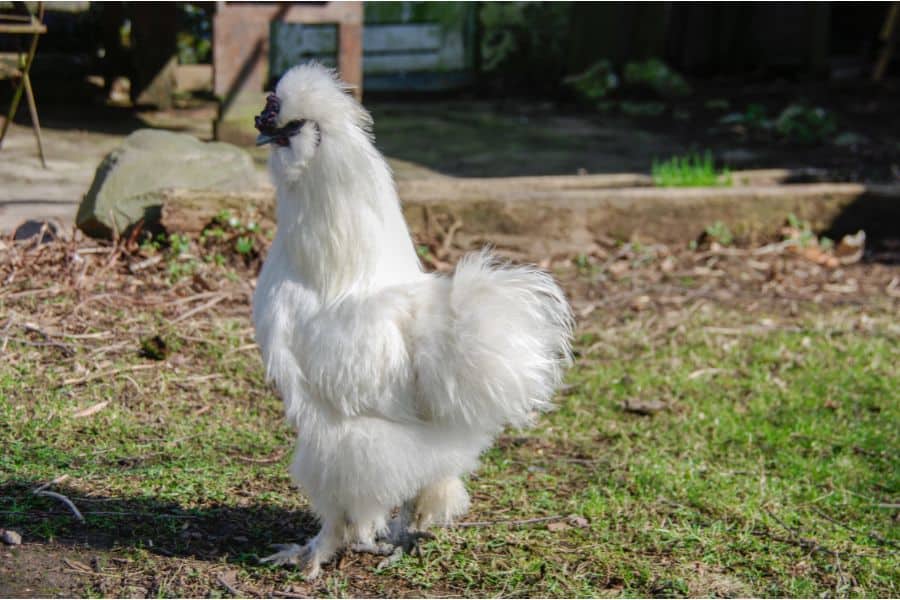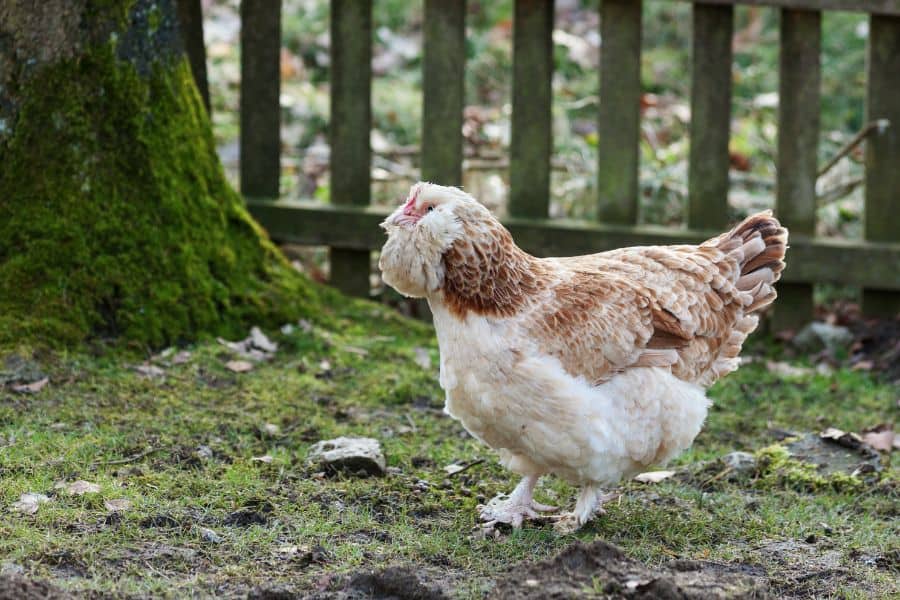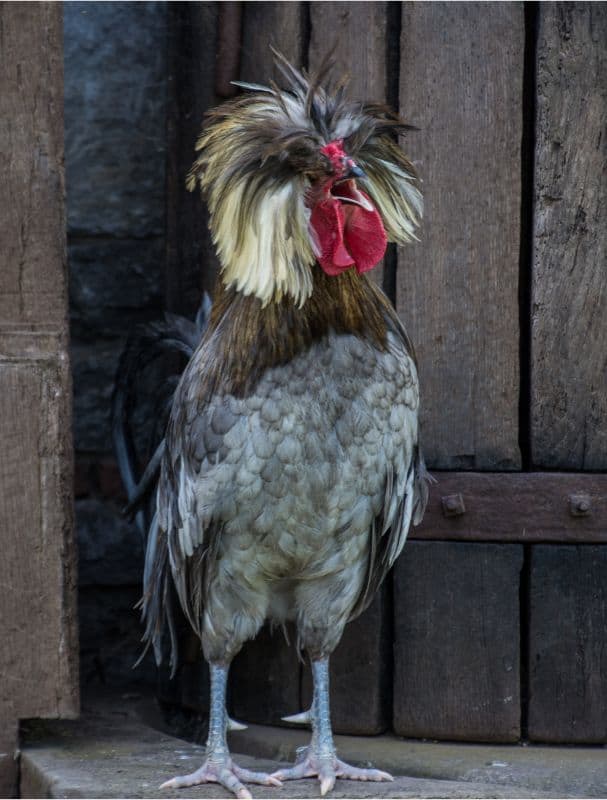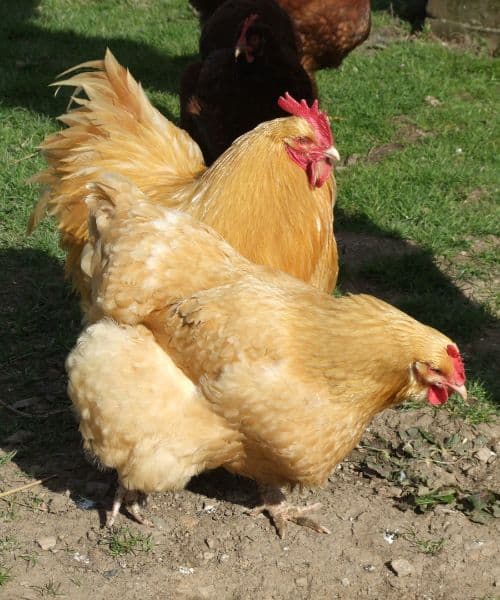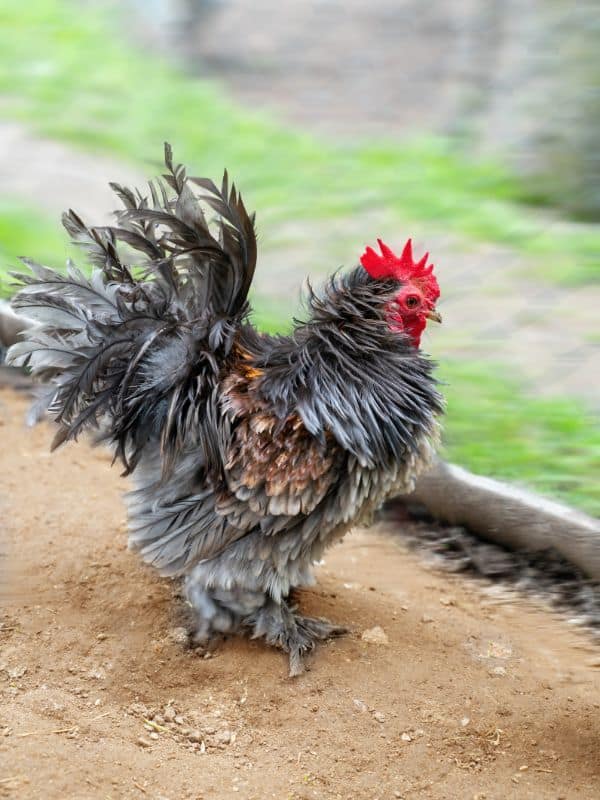There is something about fluffy chickens that makes you want to pick them up and cradle them in your arms; gently of course.
Some of these chickens get their fluffy look because they have more feathers than usual. However, others have completely different feathers than we see on regular chickens.
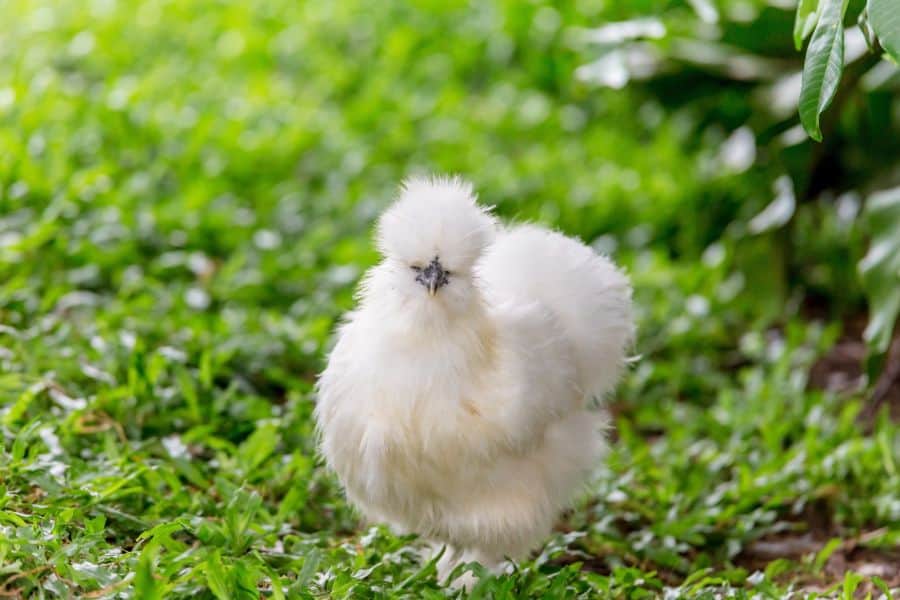
Fluffy chickens are popular in exhibition circles, but some also make great utility birds. These are chickens that can produce 200+ eggs in a year or serve as the perfect centerpiece for your Sunday dinner.
Fluffy chickens come in different sizes and include some of the smallest and largest chicken breeds. Many of these chickens also happen to have excellent temperaments, making them ideal pets to cuddle with.
If you’re looking to add one or two fluffy birds to your flock, here are our top 12 recommendations.
Fluffy Chicken Breeds
1. Cochin
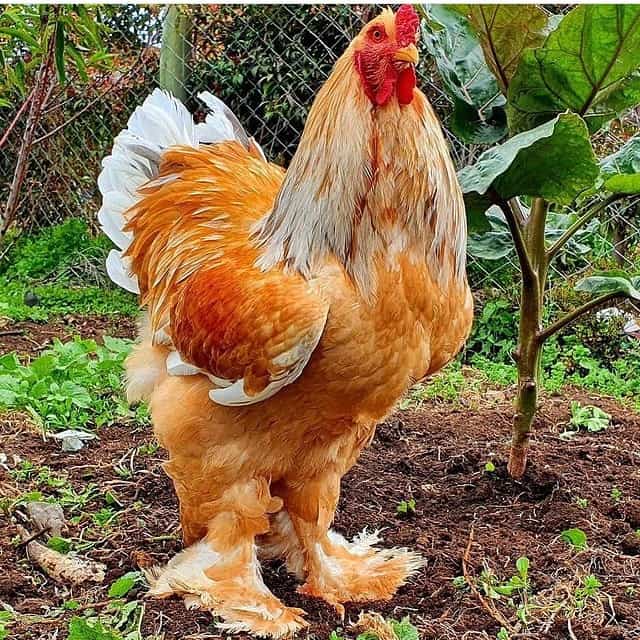
Cochins are easy to recommend because they are some of the fluffiest chickens out here and have even been described as ‘fluff balls’. They have a lot of feathering, and these go all the way down to their feet.
Cochins are so fluffy that they look larger than they actually are. This is no small feat considering these birds can weigh an impressive 13 pounds.
Cochins are of course more than just fluff balls. By chicken standards, Cochins are large but incredibly friendly and make some of the best pet chickens.
Cochins are easy to contain because their weight makes it difficult for them to fly. They also don’t mind confinement.
A Cochin will not make a great meat bird, but the hens can manage as many as 200 eggs in a year.
- Origin: China
- Colors: Black, lemon, white, buff, partridge, etc.
- Weight: 11 – 13 lbs.
- Great For: Pets, Ornamental birds
- Fun Fact: In the 1800s a flock of Cochins was gifted to Queen Victoria.
2. Silkie
Silkie chickens are a phenomenon even among furry chickens. Their feathers have a unique structure that gives them fluffy plumages and fluffy heads as well.
The Silkie’s feathers look like down feathers and their texture has been compared to satin or silk. They lack structures called barbicels that make normal feathers look like they do.
It’s not just their feathers that make these birds interesting. They also happen to have black skin and bones due to a mutation called fibromelanosis.
What is so great about the Silkie is that all these adorable features and more come in a friendly package that has made these the ideal pet chicken for many. Silkies are also great at brooding and are regularly used to hatch the eggs of other backyard fowl.
Silkie’s weigh about 3 pounds at most, and this has led to them being classified as bantam chickens in some countries.
- Origin: China
- Colors: Black, white, buff, splash, etc.
- Weight: 98 – 3 lbs.
- Great For: Pets, Hatching eggs.
- Fun Fact: Unscrupulous breeders once marketed Silkies as the offspring of rabbits and chickens.
3. Faverolles
This particular fluffy chicken is named after a village in France. Apart from their fluffy legs and bodies, both the hens and roosters of this breed have amazing full beards that give them a unique look.
The fluffiness of these birds has practical advantages as Faverolles are excellent layers during cold winters. Faverolles chickens also have highly regarded meat even though they are today mainly kept for exhibition.
You can get these fluffy chickens in a fair number of colors, but Salmon remains the most popular choice. This color is only found in this breed of chickens.
Faverolles are one of the most docile chickens you can add to your flock and even the roosters are typically quiet compared to other breeds. They can be easily bullied by other breeds despite their imposing size.
- Origin: France
- Colors: Salmon, white, cuckoo, mahogany, blue, etc.
- Weight: 5 – 11 lbs.
- Great For: Eggs, meat, pets
- Fun Fact: Were once considered the best French breed ever produced.
4. Brahma
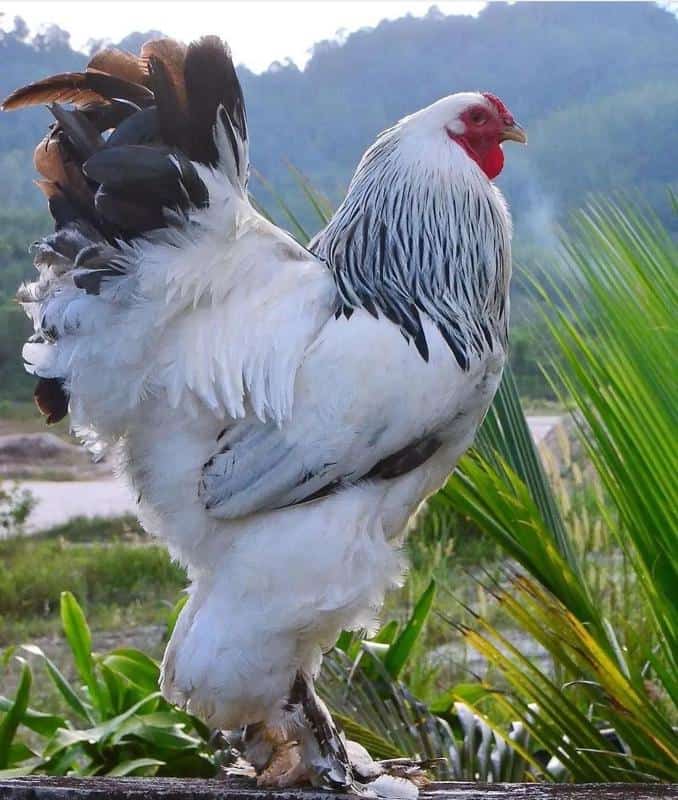
The Brahma is an absolute giant of a chicken, and they are heavily feathered all the way down to their toes. Between the 1850s and 1930, if you were eating chicken in the US, it was most likely a Brahma.
Brahmas make a great breed to cradle in the hands not just because of their copious feathers but because they are friendly darlings who don’t even bother harassing smaller chickens. Luckily, unlike Faverolles, they are not easily intimidated around the coop.
Today, the heaviest Brahmas weigh around 12 pounds, but these chickens once weighed as much as 18.25 pounds. Smaller children will need to fight the temptation to try and lift one of these birds.
You can get as many as 200 eggs from your Brahma which is just one more reason to love these fluffy giants.
- Origin: USA
- Colors: Light, Dark, Buff
- Weight: 10 – 12 lbs.
- Great For: Meat, Eggs, Pets
- Fun Fact: The Brahma’s name was shortened to save space when printing.
5. Polish/ Poland
If there was an award for the chicken with the fluffiest head, Polish chickens would probably win every time. These birds have some of the most impressive crests found on chickens.
The crests on Polish chickens resemble pom-poms on the hens but are a little less tidy on roosters. Some also have beards.
Polish chickens are typically calm and are popular as pets. However, they also get easily startled because their fluffy crests can become long and impede their vision.
Polish chickens can be kept as layers because they lay about 150 eggs each year. They require more protection because they are prone to flying predators.
Polish chickens also happen to be good fliers so you may want to check in the trees if you’re missing one.
- Origin: Europe
- Colors: Golden, White, Silver, White Crested Blue, etc.
- Weight: 4 – 6 lbs.
- Great For: Eggs, Exhibition
- Fun Fact: Despite several theories, no one knows for sure where these birds originated or why they are called Polish/Poland chickens.
6. Orpington
The Orpington may look like a bird that’s dressed for a Russian winter, but they were developed in England. The original fluffy feathering of these birds was black so it could hide the soot that characterized London in the late 1800s.
Orpingtons are sizeable birds with the largest weighing as much as 10 lbs. The fluffed-out feathers make them look even larger.
Orpingtons were quickly recognized to be an excellent dual-purpose breed because they grew quickly, had great-tasting meat, and could lay over 200 eggs. In fact, in the early days, some Orpingtons were said to lay up to 340 eggs in a year.
However, the fluffy look of these birds won people over and many started breeding Orpington chickens mainly for their looks. They have great personalities as the cherry on top.
- Origin: England
- Colors: Black, buff, blue, white, splash, etc.
- Weight: 8 – 10 lbs.
- Great For: Meat, Eggs, Pets
- Fun Fact: Austrolorps were developed from the Orpington with the goal of maximizing egg production.
7. Crèvecœur

Crèvecœur chickens have both fluffy bodies and heads thanks to their crests. These fluffy birds were in existence as far back as the 1100s.
Impressive as their fluffy looks are, the practical French people at the time loved these birds because they are delicious. These chickens are also fair layers that can produce between 120 and 150 eggs in a year.
There were three early attempts to establish the breed in the US, but all ended in failure as they weren’t built for the climate in some parts of the country.
Crèvecœur chickens are great for the modern backyard farmer because they have excellent table qualities, produce an okay number of eggs, and have very friendly temperaments. Additionally, the modern members of this breed were improved to make them less delicate.
Crèvecœur chickens are said to have digestive systems that are more sensitive than other chickens.
- Origin: France
- Colors: Black, white, cuckoo, blue
- Weight: 6 – 7.7 lbs.
- Great For: Meat, Eggs, Pets
- Fun Fact: Crèvecœurs were rendered critically endangered by World War II.
8. Dorking
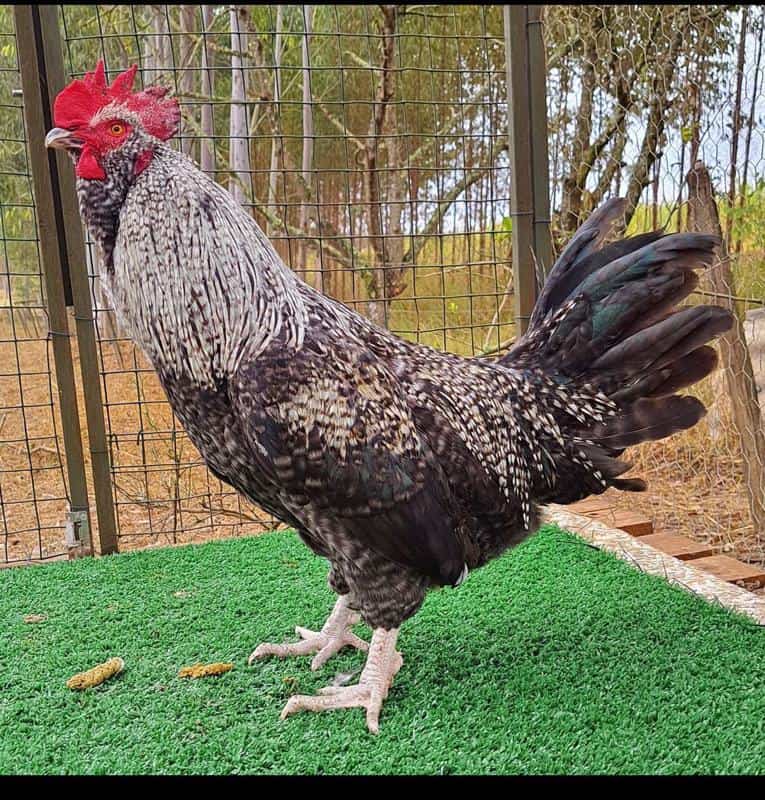
The Dorking is a very old chicken breed, and they are heavily feathered birds. It is thought that these chickens originated from birds brought to the UK in 43 A.D. by the Romans.
Dorking chickens’ fluffy looks and extremely friendly personalities make them great pets, but they were far more valuable as meat birds. It was almost impossible to get live Dorking birds at some point due to their popularity with breeders.
There are single-combed and rose-combed varieties of the Dorking chicken, but the latter is harder to find. However, it is the better choice in colder climates.
Dorkings don’t like to wander far from their homes but are still great at foraging.
- Origin: England
- Colors: White, Silver Gray, Black, Red, etc.
- Weight: 7 – 9 lbs.
- Great For: Meat, Eggs
- Fun Fact: Despite their large size and short legs, Dorkings will roost in trees if allowed to.
9. Croad Langshan
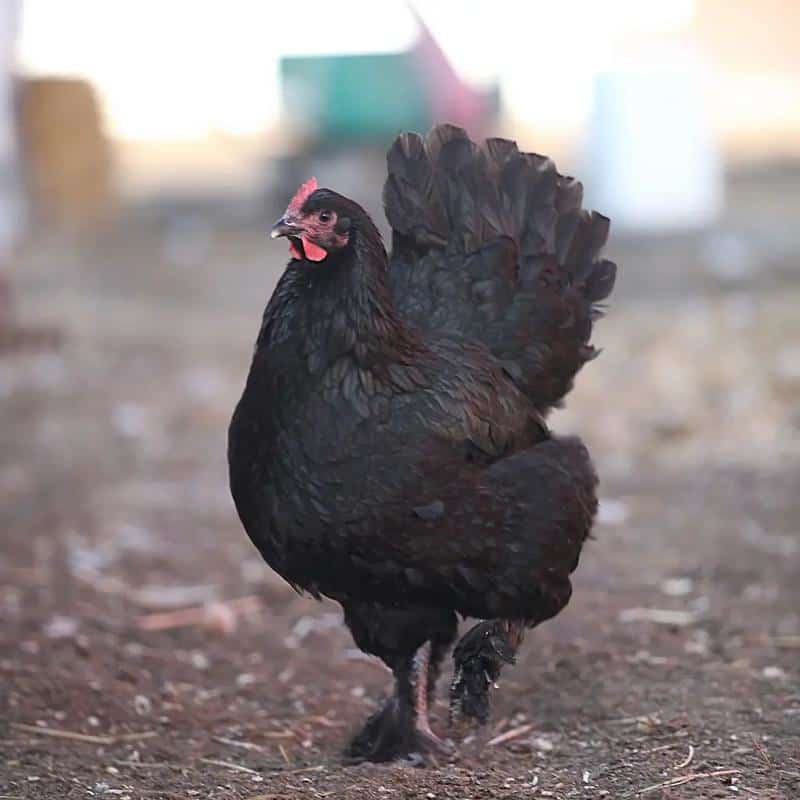
Croad Langshan is an old chicken breed from China, noted both for its size and soft feathering which gives it a fluffy look. It was named after the first Englishman to import it into Britain, Major Croad.
Croad Langshans can weigh as much as 11 pounds and are an excellent dual-purpose breed. The hens can manage more than 150 eggs in a year and the meat of this fast-growing bird is said to be quite flavorful.
Croad Langshans make a good choice for farmers looking for fluffy chickens with friendly personalities. They are better suited to the climate in the Southern States due to their origins.
Croad Langshans do have feathered feet but their feathering is more modest compared to Brahmas and Cochins.
- Origin: Wolf Hill, China
- Colors: Black, White, Blue
- Weight: 7 – 11 lbs.
- Great For: Meat, Eggs
- Fun Fact: Croad Langshan chickens are not great sitters but are excellent mothers.
10. Lincolnshire Buff
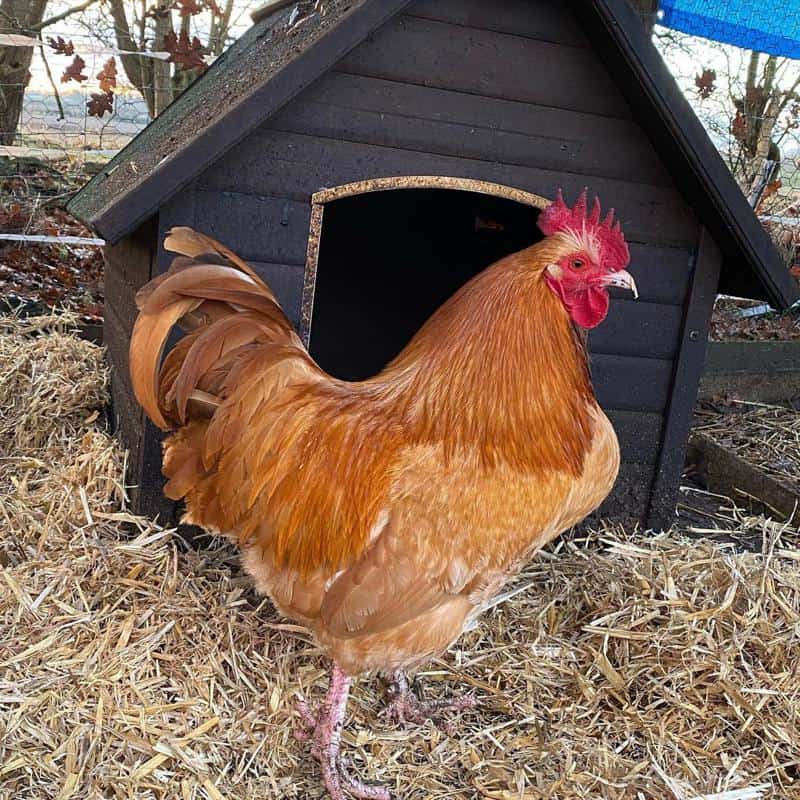
You may not have heard of this fluffy breed, but its story is certainly more interesting than most.
These chickens were once abundant in Lincolnshire farms which supplied London markets. However, their popularity plummeted when the Buff Orpington was developed.
It is said that by 1900, you couldn’t sell a Lincolnshire Buff at half the price of a Buff Orpington.
These chickens disappeared at some point in the early 1900s but in the 1980s, the breed was recreated in Lincolnshire.
Lincolnshire Buffs are still rare birds today. They are great for backyard farms because they are fair layers capable of producing up to 130 eggs per year. They also make fine table birds with clean carcasses.
- Origin: Lincolnshire, England
- Colors: Buff
- Weight: 9 – 11 lbs.
- Great For: Meat, Eggs
- Fun Fact: Today’s Lincolnshire Buffs were created using genetic material that was preserved in the Buff Orpington.
11. Frizzle
Frizzle chickens are an oddity because they are used to refer to any chicken with the frizzle gene. This gene, however, shows up in several breeds including Polish and Pekin chickens.
Chickens with the frizzle gene can develop feathers that curl towards the head of the bird. In some cases, chickens will develop over-frizzled feathers which are brittle.
In the US, there are no specific breed standards for Frizzle chickens, and they are judged based on their actual breed. However, in several European countries and Australia, there are specific breed standards for Frizzle chickens.
Frizzle chickens are typically reared for exhibition.
- Origin: Asia
- Colors: Black, White, blue, buff, etc.
- Weight: 6 – 8 lbs.
- Great For: Exhibition
- Fun Fact: Frizzle Chickens have a 25% chance of having normal-feathered offspring.
12. Sultan
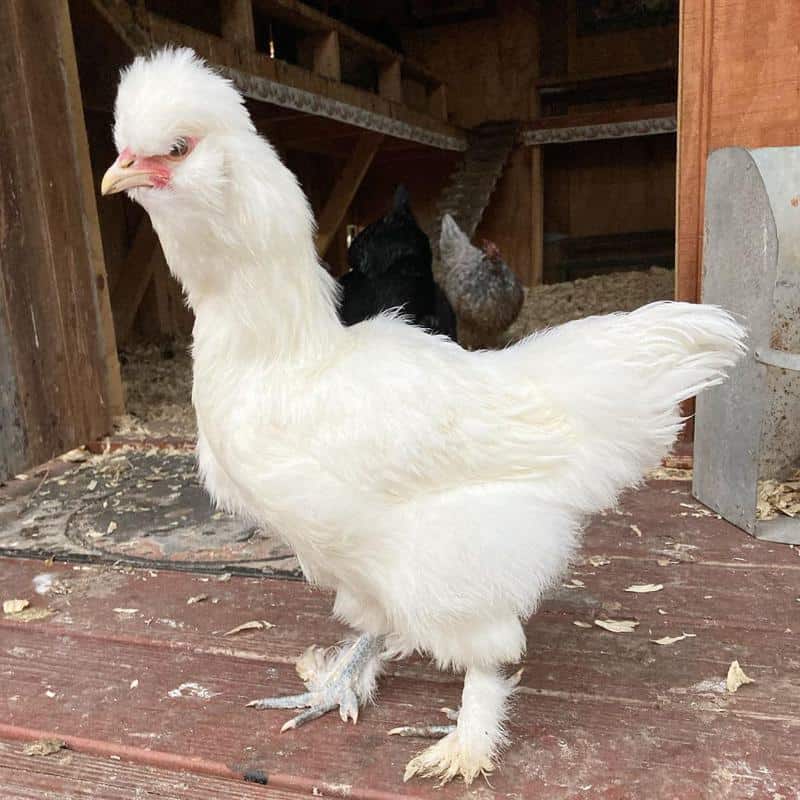
If you’re looking for a chicken with a fluffy body and a fluffy head, this last chicken ticks both boxes. Originating in Turkey, Sultan chickens have served as ornamental birds since the 14th century at least.
‘True’ Sultan chickens are pure white with fluffy-looking plumage. They also have beards, crests, and feathered feet with five toes.
There are unrecognized Blue and Black Sultans.
These chickens have been used as table birds in the past, but they are mainly kept as pets or for ornamental reasons. They only lay about 50 eggs in a year.
Sultan chickens have excellent temperaments and love being around people and even being handled. However, they require a little more care than your standard chickens.
- Origin: Turkey
- Colors: White
- Weight: 4 – 6 lbs.
- Great For: Exhibition
- Fun Fact: Sultan chickens are the smallest non-bantam chicken breed.
How to Care for Fluffy Chickens
Depending on the breed, your fluffy chickens may require a different level of care compared to regular chickens. General tips for caring for fluffy chickens are:
- Most fluffy chickens will need protection from heat due to their heavy feathering. Provide lots of sheds and keep their coops well-ventilated in summer.
- Protect Silkies and Frizzle chickens from cold weather since their feathers may offer inadequate levels of insulation.
- Many fluffy chickens are gentle, and this can make them prime targets for bullying by other breeds. Ensure more vulnerable fluffy chickens are not kept with aggressive breeds.
- Chickens with fluffy heads are easy targets for predators due to their poor visibility. These should be kept in a covered run.
- Chickens with fluffy heads may also be targeted by the bullies in your flock. Breeds like Polish and Sultan should not be kept near aggressive breeds.
- The feathered feet of most fluffy chickens can get wet or muddy. This is a major concern in winter since this can lead to frostbite. Keep the run covered to avoid this.
- Many fluffy chickens including Silkies, Brahmas, and Croad Langshans are poor fliers. Their coops should have accommodations that enable them to roost easily such as lower roosting bars.
Also Read: Pretty Chicken Breeds
Final Words
Fluffy chickens are not new, but interest in them seems to be on the rise. These birds have some of the rarest qualities seen in chickens, but also have plenty of utility in a backyard farm.
A common quality in these chickens is their temperament. Many are tame and gentle and are already popular as house or backyard pets.
Backyard farmers looking for good ornamental birds that double up as layers have good options to choose from including Orpingtons and Langshans. For those interested in table fowl, you can hardly go wrong with Crèvecœur and Dorking chickens.
Some of the features that make fluffy chickens special also make them vulnerable such as the crests of chickens with fluffy heads. These are issues you’ll need to address depending on the specific breed of chicken you choose.
Many fluffy chickens are beginner friendly and the 12 on this list should be among the first you consider.
